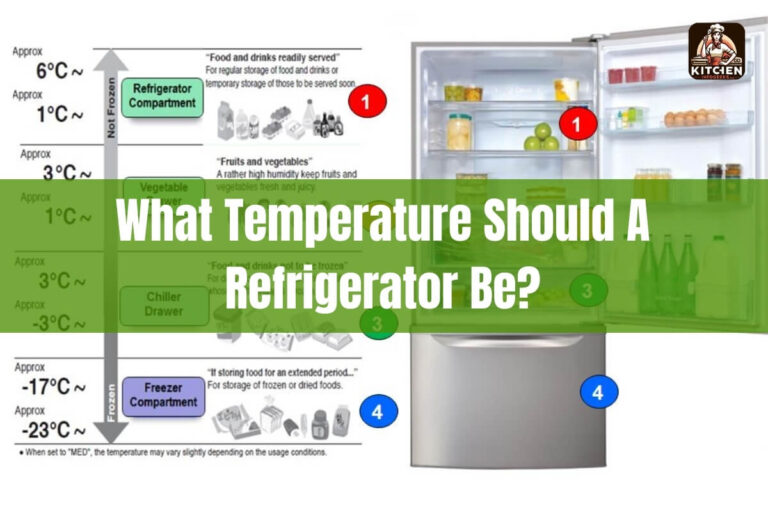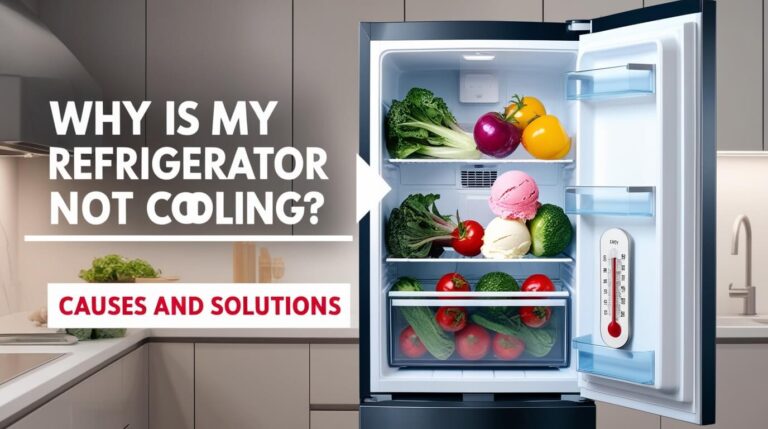
Is your fridge not defrosting? This can cause ice buildup, poor cooling, and spoiled food. We’ll cover why this happens and how to fix it. Fridges keep our food fresh, so when they break, it’s a big problem.
Here’s what you need to know about fridge defrosting, common issues, and repairs.
Refrigerator Defrost System
To tackle defrosting issues, it’s important to know how the system works.
Components of a Defrost System
A typical refrigerator defrost system consists of three main parts:
- Defrost timer or control board
- Defrost heater
- Defrost thermostat
Each component plays a vital role in keeping your fridge frost-free.
How the Defrost Cycle Works
The defrost cycle is a clever process that keeps your fridge running smoothly. Here’s how it works:
- The timer or control board initiates the defrost cycle.
- Power is cut to the compressor and sent to the defrost heater.
- The heater melts frost on the evaporator coils.
- The thermostat monitors the temperature and stops the cycle when needed.
This process usually happens 2-3 times a day, lasting about 25-30 minutes each time.
Common Signs Your Refrigerator Isn’t Defrosting
Spotting defrosting problems early can save you from bigger headaches down the line.
Excessive Frost Buildup
If you notice thick frost or ice on the freezer walls or evaporator coils, it’s a clear sign your fridge isn’t defrosting properly.
Warm Refrigerator Compartment
When frost blocks the air vents, your fridge can’t cool effectively. If your food isn’t as cold as usual, defrosting issues might be to blame.
Water Leakage
Puddles of water inside or around your fridge often point to defrosting problems. As ice melts, it can overflow drainage channels.
Top Reasons for a Refrigerator Not Defrosting
Let’s explore the most common culprits behind defrosting failures.
Faulty Defrost Timer
The defrost timer controls when defrost cycles occur. If it’s broken, your fridge won’t know when to start defrosting.
Defective Defrost Heater
A burnt-out heater can’t melt frost, leading to ice buildup. You can often spot visible damage or use a multimeter to check for continuity.
Malfunctioning Defrost Thermostat
This component tells the system when to stop heating. If it’s faulty, the defrost cycle might never start or end at the wrong time.
Issues with the Defrost Control Board
In modern fridges, a control board manages defrosting. If it fails, the whole process can grind to a halt.
Problems with the Main Control Board
While less common, a faulty main control board can disrupt defrosting by failing to send power to the defrost system.
Other Factors Contributing to Defrosting Problems
Sometimes, the issue isn’t with the defrost system itself but with how we use our fridges.
Door Seal Issues
A damaged or dirty door gasket lets warm air in, creating more frost and making the defrost system work harder.
Overpacking the Freezer
Stuffing your freezer too full can block air vents and make it harder for the defrost system to work efficiently.
Freezing Hot Foods
Putting hot food directly in the freezer creates extra moisture, leading to more frost buildup.
Incorrect Temperature Settings
Setting your fridge too cold can overwhelm the defrost system, causing excessive frost.
DIY Troubleshooting Steps for a Non-Defrosting Refrigerator
Before calling in the pros, try these simple troubleshooting steps.
Checking the Door Seal
Inspect your door gasket for damage or debris. Clean it with warm, soapy water and dry thoroughly.
Inspecting for Airflow Blockages
Remove items blocking air vents in your freezer. Aim to keep it no more than 75% full for optimal airflow.
Manual Defrosting Process
If all else fails, you can manually defrost your fridge:
- Remove all food and turn off the fridge.
- Leave the doors open and place towels to catch water.
- Use a hairdryer or fan to speed up melting (never use sharp objects).
- Clean and dry the interior before restarting.
When to Call a Professional Repair Service
Sometimes, DIY just won’t cut it. Here’s when to bring in the experts.
Signs It’s Time for Expert Help
Consider professional help if:
- You’ve tried DIY fixes without success
- There’s a burning smell or unusual noises
- You’re not comfortable working with electrical components
What to Expect from a Repair Service
A good repair service will:
- Diagnose the problem accurately
- Explain the issue and repair options
- Use quality replacement parts
- Offer a warranty on their work
Preventing Future Defrosting Issues
An ounce of prevention is worth a pound of cure, especially with fridges.
Regular Maintenance Tips
Keep your fridge happy with these tips:
- Clean the condenser coils twice a year
- Check and clean the door gasket monthly
- Defrost manually if frost exceeds 1/4 inch
Best Practices for Refrigerator Use
Adopt these habits for a healthier fridge:
- Let hot foods cool before refrigerating
- Don’t overpack your fridge or freezer
- Keep the temperature between 37°F and 40°F for the fridge, and 0°F for the freezer
A refrigerator not defrosting can be a real headache, but armed with this knowledge, you’re well-equipped to tackle the problem. Remember, regular maintenance and proper use go a long way in preventing defrosting issues. If you’re ever in doubt, don’t hesitate to call a professional. Here’s to frosty drinks, not frosty fridges!






